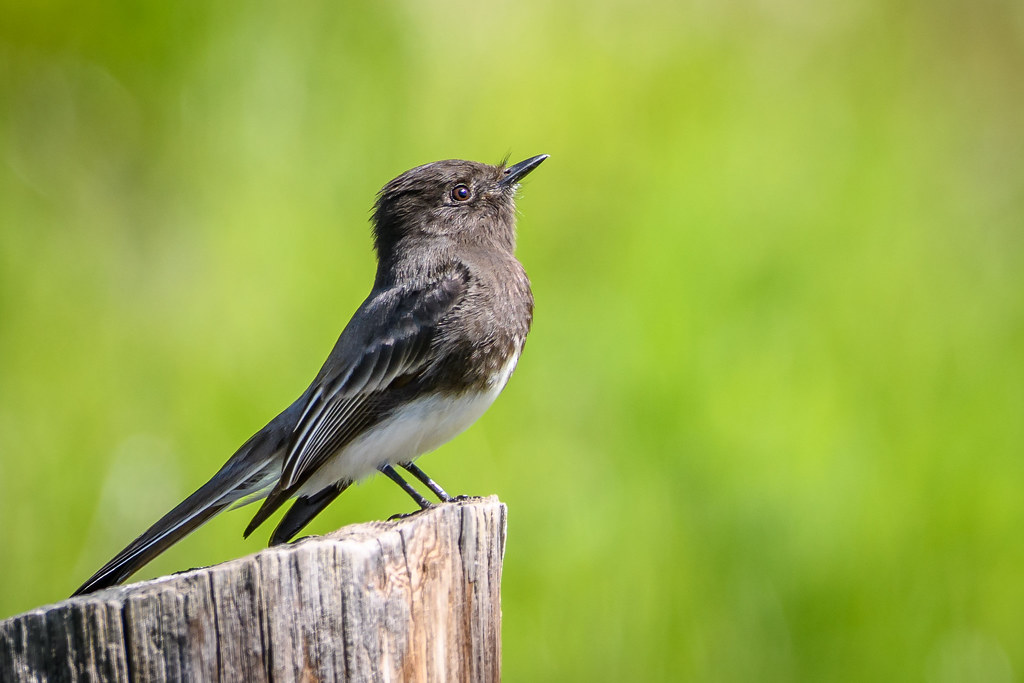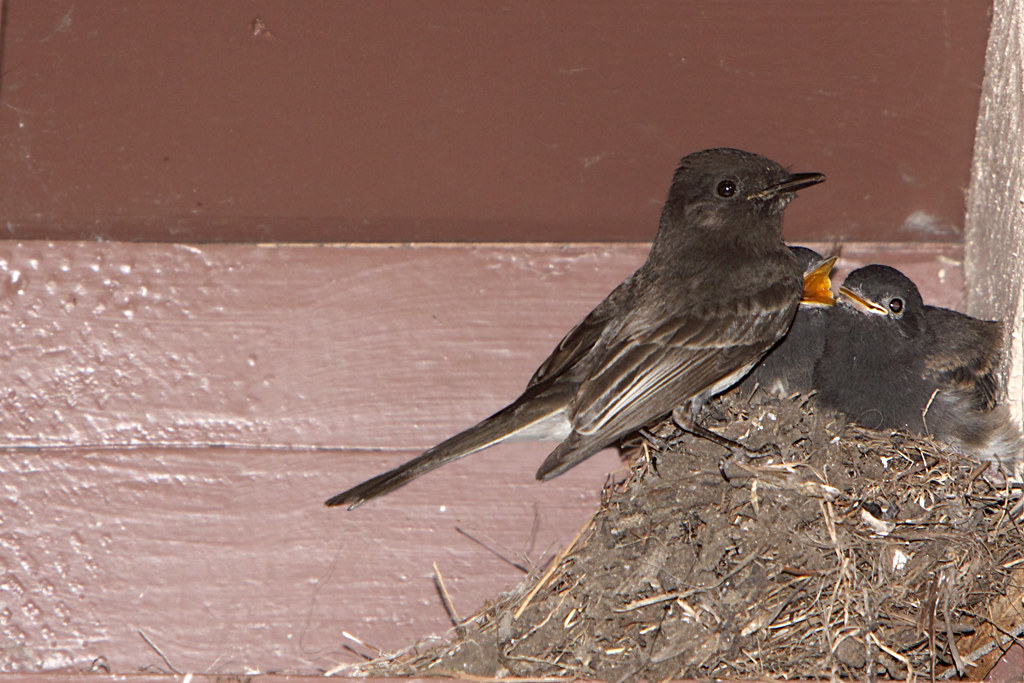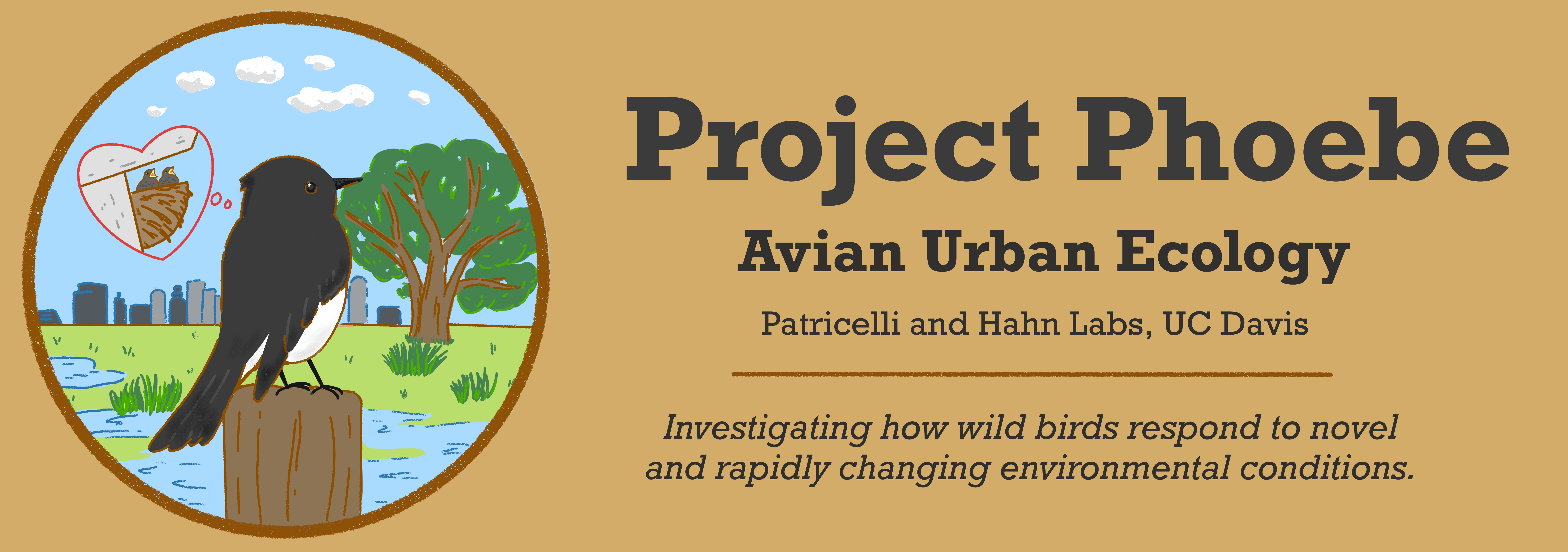Black Phoebe Natural History
Cheep! In a blur of black feathers, she lunges from the fencepost, swooping low over water and grass. The black-and-white bird twists acrobatically through the air, using her tail feathers to rudder hard to the left in pursuit of the target. When she alights back on her perch a second later, the bug is clamped firmly in her beak. She tilts her head to the side and pumps her tail. Another successful trip.

The Black Phoebe (scientific name: Sayornis nigricans) is a small insect-catching bird that lives near rivers, streams, and increasingly, human habitats.1 All over the Western US and Mexico, Black phoebes make their homes wherever water and flying insects are handy. They build cup-shaped nests out of mud that look out on rocky overhangs, bridges, and all kinds of elevated surfaces. Male and female Phoebes work as a pair to raise a clutch of 1-6 eggs, and can raise as many as three broods in a single year.

This charismatic bird is abundant in backyards, natural areas, and cities alike, perching on low branches and fences and making its telltale call. In fact, you can hear Black Phoebes calling anywhere from the rocky cliffs surrounding San Francisco to the heart of agricultural farmland in the Central Valley. This species seems much more flexible than many of its close cousins when it comes to living near humans.
It begs the question: why?
Why is this flycatcher so common in cities, where people use pesticides and other controls to get rid of insects? How does it navigate suburban life, where we build homes far from bodies of water? Black Phoebes seem to have very particular needs when it comes to food and shelter, and yet they are far more abundant around than many other, “less-needy” birds. This makes the Black Phoebe a fascinating and important species for us to study. Because it’s so widespread, we can view the ecology and behavior of Phoebes in all kinds of different environments. What can the Black Phoebe tell us about how animals exist in these different environments? Is there more to this species’ ability to cope with humans than meets the eye? Our team is only just beginning to find out.
Stay tuned!
References
- Wolf, B. O. (2020). Black Phoebe (Sayornis nigricans), version 1.0. In Birds of the World (A. F. Poole and F. B. Gill, Editors). Cornell Lab of Ornithology, Ithaca, NY, USA. https://doi.org/10.2173/bow.blkpho.01

